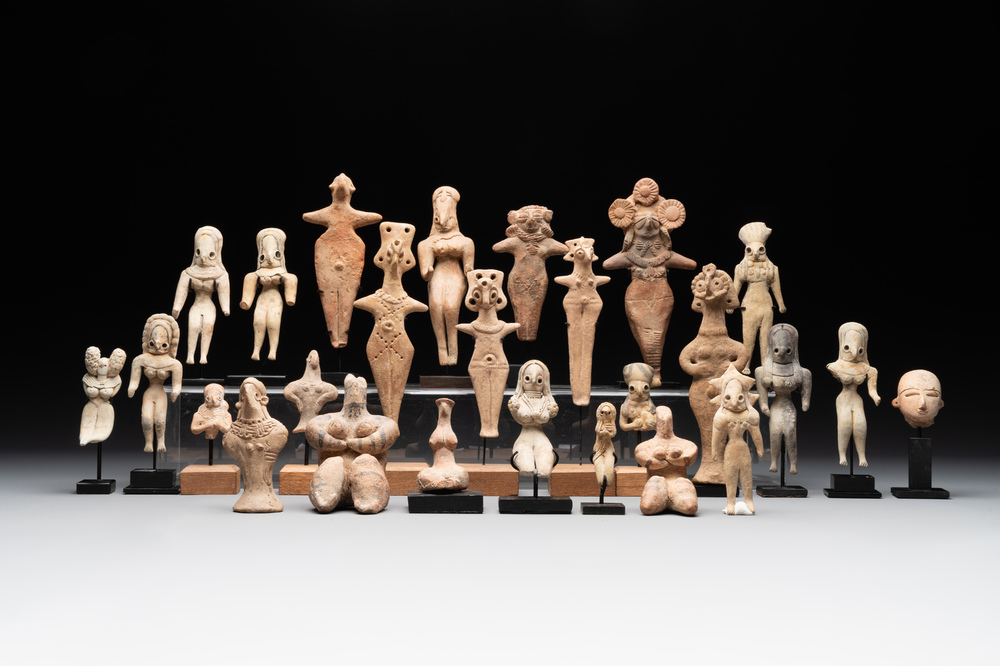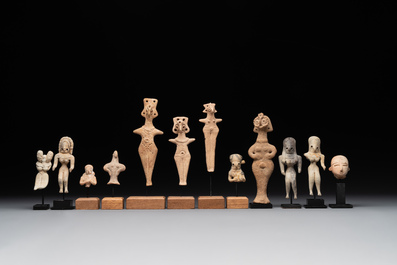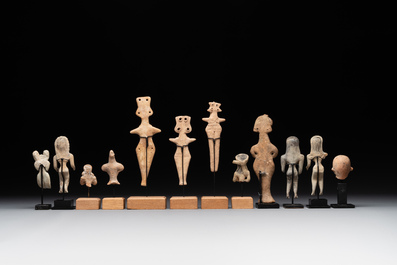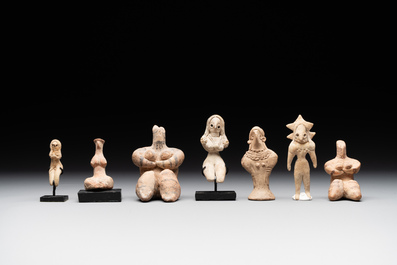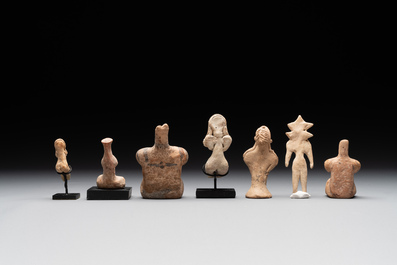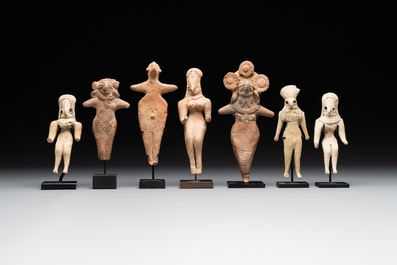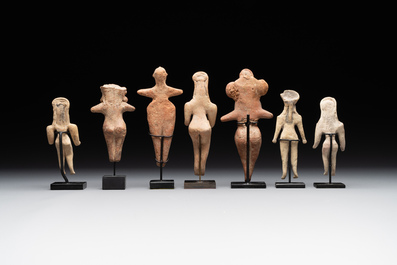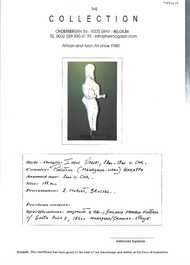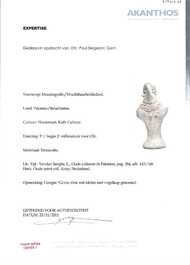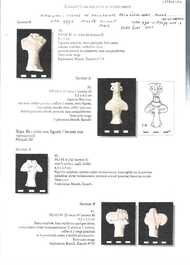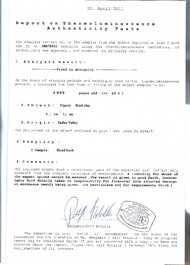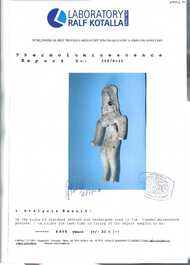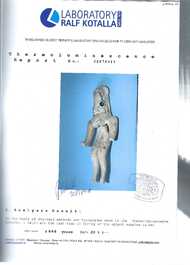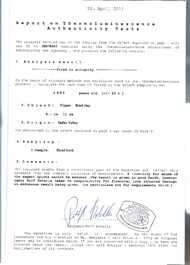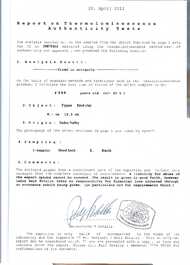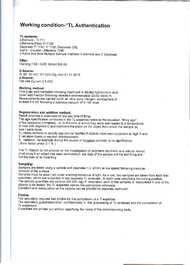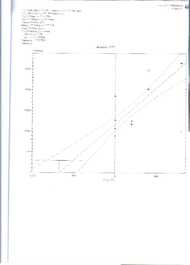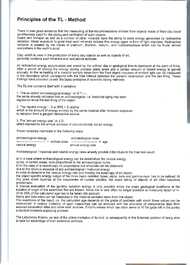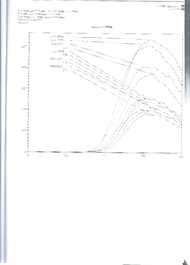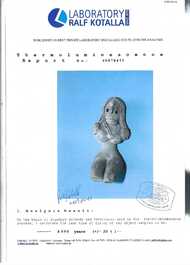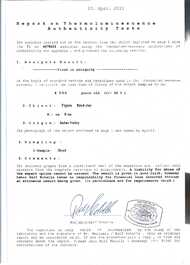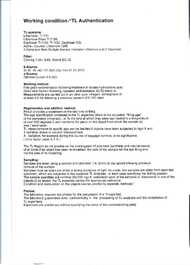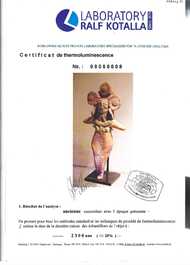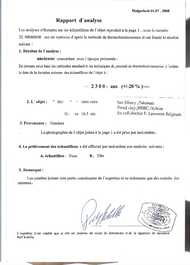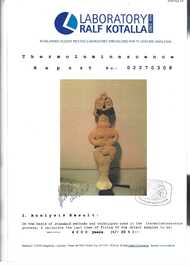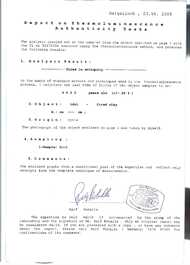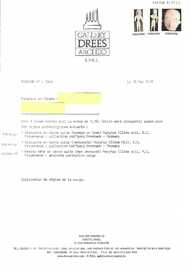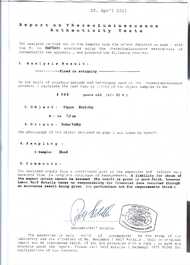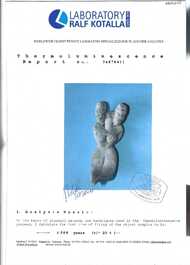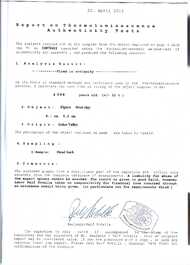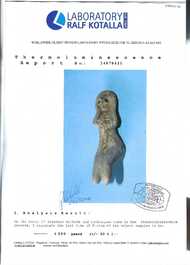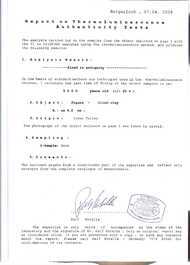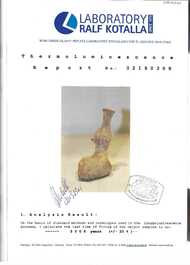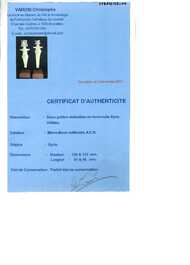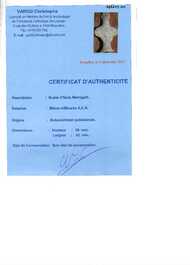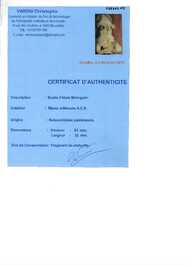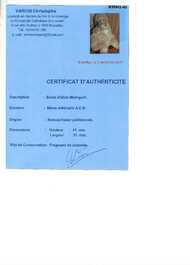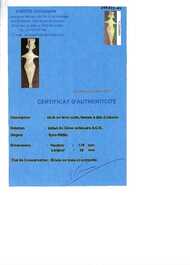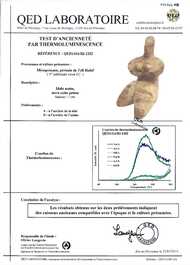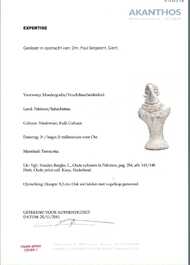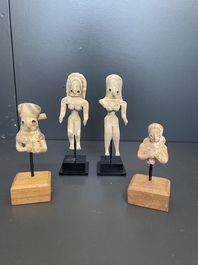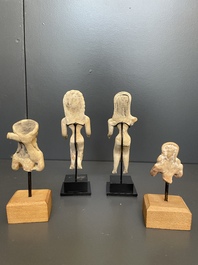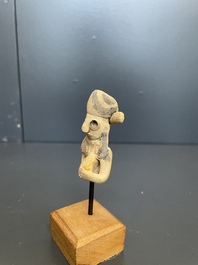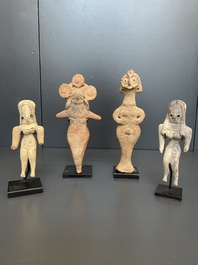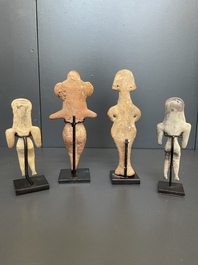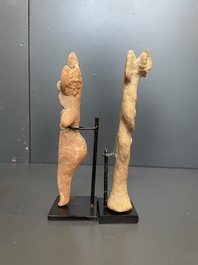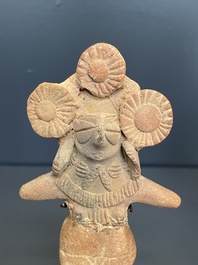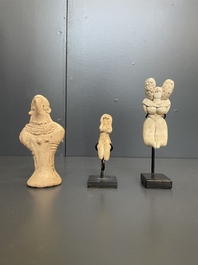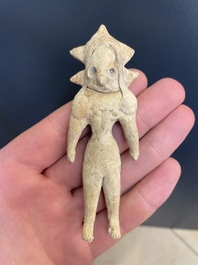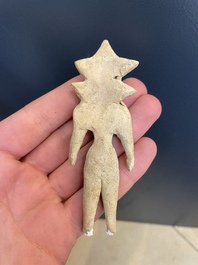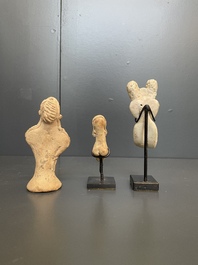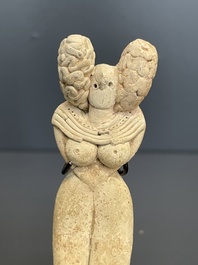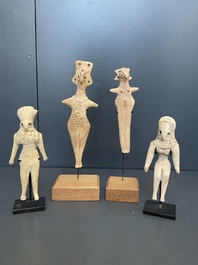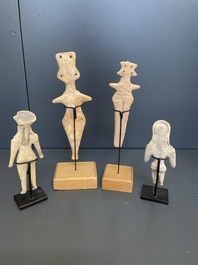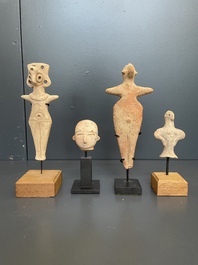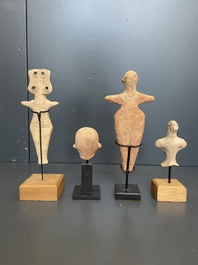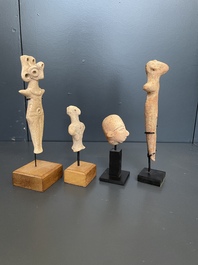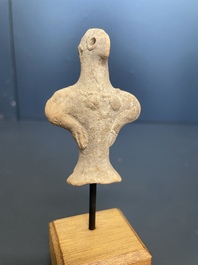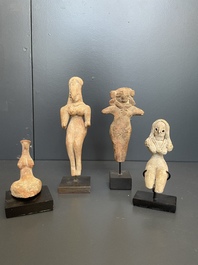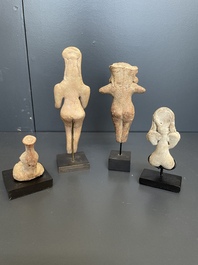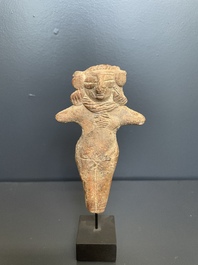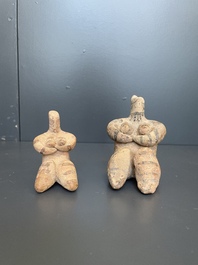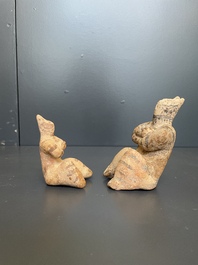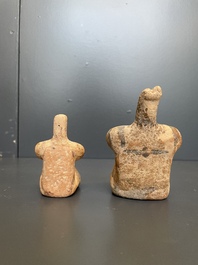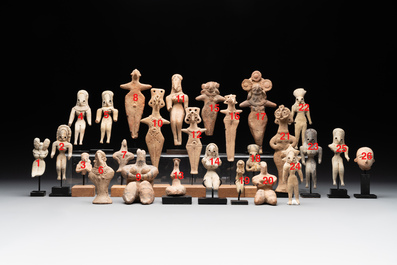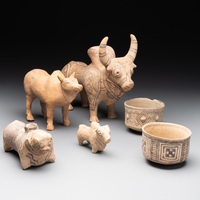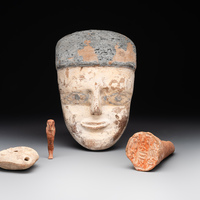We moeten verifiëren dat uw registratie niet om een geautomatiseerde ingave in ons systeem gaat. Vervolledig aub de onderstaande test...
An exceptional collection of terracotta idols, Mehrgarh, Syro-Hittite states and Indus Valley, 35th/3rd C. B.C.
H.: 16,5 cm (the tallest, excl. stand)
H.: 4,1 cm (the smallest, excl. stand)
The terracotta idols from Mehrgarh represent some of the earliest known figurative sculptures in South Asia. These idols, dating from the Neolithic to the Chalcolithic period, are typically small, hand-moulded figures that often depict human and animal forms. The human figurines usually have exaggerated feminine features, such as pronounced breasts and hips, suggesting they may have been fertility symbols. Crafted with simple tools, these idols show a high degree of artistic expression and cultural significance. The surfaces of these terracotta figures are often decorated with incised patterns or painted designs, highlighting their ceremonial or ritualistic purposes.
Syro-Hittite terracotta idols, dating from the Iron Age, are remarkable for their stylistic diversity and intricate craftsmanship. These figures often depict deities, mythical creatures, and worshippers, reflecting the rich pantheon and religious practices of the Syro-Hittite culture. The idols are characterized by their stylized features, with detailed facial expressions and elaborate headdresses. Some figures also display intricate body adornments, such as jewellery and patterned clothing. The use of terracotta allowed for a wide range of artistic experimentation, resulting in highly detailed and expressive sculptures that provide valuable insights into the religious and cultural life of the Syro-Hittite states.
The terracotta idols from the Indus Valley Civilization are notable for their sophistication and attention to detail, reflecting the advanced urban culture of this ancient civilization. These idols often depict human figures, animals, and mythical beings, crafted with a high degree of skill. The human figures, both male and female, are frequently shown with elaborate hairstyles, headdresses, and ornaments, indicating their social or religious significance. The animal figures, including bulls, elephants, and birds, are rendered with realistic detail and dynamism. These terracotta idols were likely used in domestic worship, rituals, and as toys, demonstrating the multifaceted role of such artifacts in the Indus Valley Civilazation. The finely modeled features and intricate decorations of these idols underscore the artistic achievements and cultural richness of the Indus Valley Civilization.
Provenance:
- The collection of Mr. and Mrs. S., Ghent, Belgium.
- Ex-collection of Dr. F. Lauwers, Belgium.
- Ex-collection of Mr. Kooy, The Netherlands.
- Ex-collection of Mr. Wolfgang Donsbach.
References:
- Book 'Civilisations anciennes du Pakistan', page 248.
- Catalogue 'I Dolls', Cecile Kerner.
- Book 'Inde', M.Hallade, figure 7.
- Book '7000 jaar Perzische Kunst', page 153.
